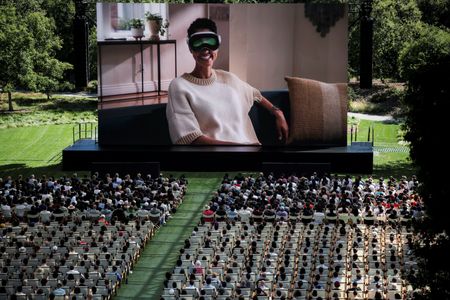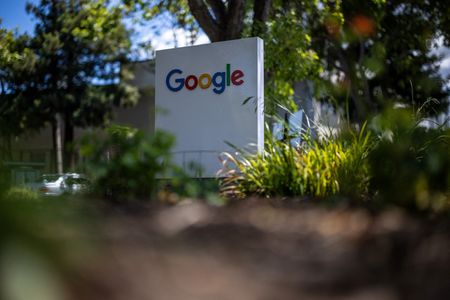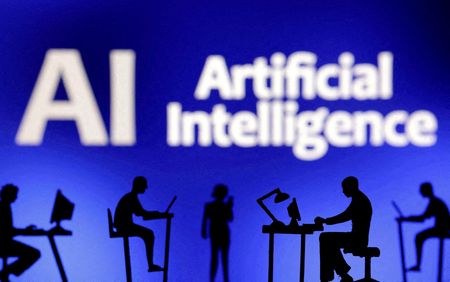By Aditya Soni, Max A. Cherney
(Reuters) -Apple unveiled a long-awaited AI strategy on Monday, integrating its new “Apple Intelligence” technology across its suite of apps including Siri and partnering with OpenAI to bring ChatGPT to its devices.
With these moves, the iPhone maker is seeking to reassure investors that it has not lost the AI battle to Microsoft, even though it may have forfeited a few rounds.
But shares of the iPhone maker were down 2% in afternoon trading as investors sought more AI announcements.
The stock has trailed those of other Big Tech companies this year.
The AI features were announced at its Worldwide Developers Conference and will come with the latest operating system for its devices, which were also demonstrated at the event.
The features will allow users to summarize text and generate other content, such as personalized animations to wish a friend happy birthday.
Apple also said that the ChatGPT integration would be available later this year and that other AI features will follow, adding that the chatbot could be accessed for free and that users’ information will not be logged.
Apple executive Craig Federighi, introducing the ChatGPT integration, said, “We want you to be able to use these external models without having to jump between different tools.”
The company also revamped Siri with generative AI technology to give the long-lagging voice assistant the ability to control individual app features.
That means Siri can now delete emails and edit pictures for iPhone users – powers that had proven tricky in the past as the assistant needs to understand the user’s exact intentions as well as how the app works.
Siri will also tap in to ChatGPT’s expertise and seek permission from users before querying the OpenAI service.
Known for its focus on safety of user data, Apple said it had built AI with privacy “at the core” and that it would use a combination of on-device processing and cloud computing to power its AI features.
To make that happen, Apple plans to use its own chips to help power AI features on its devices.
It also unveiled “Private Cloud Compute,” saying its AI could draw on larger server-based models while protecting users’ privacy.
While its AI rivals are targeting enterprises, Apple plans to stand out by making the technology relevant to its more than 1 billion users – most of whom are not tech aficionados.
Apple said iOS 18, the software powering its flagship device, makes the iPhone home screen more customizable and includes improved versions of its in-house apps.
The new software will also come with a “lock an app” feature that will help people protect sensitive information.
Users can opt to lock specific apps and keep data more tightly controlled in the OS.
Apple also said it would group messages in its email client starting later this year, categorizing them in a primary folder, a transactions folder, a promotions folder and other more specific groupings, for instance communications by an airline.
The high-level categorizations are similar to a now-old feature in competitor Google’s Gmail.
The company is also making its mixed-reality headset Vision Pro available in eight more countries including China and Japan.
The new VisionOS 2 software for the headset will use machine learning to create natural depth photos and come with new gestures.
Apple uses the developer conference at its Cupertino, California, headquarters each year to showcase updates to its own apps and operating systems as well as to show developers new tools they will be able to use in their apps.
Apple has been using AI behind the scenes for years to power features on its devices, such as the ability of its watches to detect crashes and falls.
But it has been reluctant to tout how this technology boosts functionality in its devices, as Microsoft has done with the help of its early bet on OpenAI.
Microsoft overtook Apple as the world’s biggest company by market capitalization in January.
AI chip giant Nvidia briefly overtook Apple last week as the world’s second-most valuable company, underscoring for some investors a shift in power in the tech world.
(Reporting by Stephen Nellis, Max A.
Cherney and Jeffrey Dastin in San Francisco, and Aditya Soni, Pushkala A and Yuvraj Malik in Bengaluru; Editing by Sayantani Ghosh, Peter Henderson and Matthew Lewis)
















